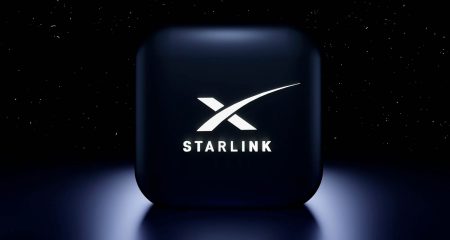 Both artificial intelligence and low-Earth-orbit (LEO) satellite constellations represent rapidly evolving technologies serving the global landscape and offering multiple advantages across an array of applications.
Both artificial intelligence and low-Earth-orbit (LEO) satellite constellations represent rapidly evolving technologies serving the global landscape and offering multiple advantages across an array of applications.
However, the focus of this article is on the advantages and potential interdependency of these innovations. In it, we’ll have a look at how both technologies benefit from each other in a virtuous circle of continuous improvement that promises accelerated growth, functionality and interoperability.
Introduction
The LEO satellite industry includes projects such as Starlink from SpaceX, Amazon’s Project Kuiper and the Chinese Thousand Sails constellation. Collectively, players in this space are set to develop, launch and operate up to 70 000 satellites by 2030, each of which will orbit the Earth at an altitude of between 500km and 1 500km. These estimates are for the anticipated communications satellites and exclude Earth observation or navigation satellites. However, it’s clear that space is going to become increasingly congested.
Join us for a discussion about satellite connectivity and how it can assist business in Africa in our upcoming webinar, Unlocking Africa’s Connectivity Potential: Mapping Satellite Services
AI touches every device and online experience in multiple ways. Generally, AI refers to systems that mimic human intelligence. Typical features include learning from data and experience (machine learning and deep learning); adapting and improving over time (self-learning algorithms); and the ability to predict, automate or make decisions without explicit programming. AI is already at work in neural networks, NLP (natural language processing), computer vision and reinforcement learning, among others.
AI for LEO constellations
Operating and managing LEO constellations is complex, and AI can assist in the following ways:
- AI for autonomous satellite operations: AI allows satellites to self-operate, adjust their positions and optimise performance without human intervention. For example, Starlink uses AI for beamforming (optimising signal distribution) and network load balancing across satellites, while Darpa’s Blackjack programme is developing AI-powered LEO satellites for military and defence applications that are capable of autonomous operation. In this way, AI reduces reliance on ground stations and improves satellite efficiency and response times.
- AI for space debris detection and collision avoidance: AI-powered models can analyse the movement of orbital debris (both manufactured and natural), allowing satellites to avoid collisions autonomously. For example, LeoLabs uses AI and radar-based tracking to predict and prevent satellite collisions in LEO constellations, while the European Space Agency (ESA) employs AI algorithms to plan collision avoidance manoeuvres for its satellites.
- AI for smart bandwidth and network optimisation: AI can also optimise data traffic and network allocation, ensuring seamless connectivity even in high-demand areas. For example, OneWeb and Starlink use AI-driven traffic management to allocate bandwidth to areas with high demand dynamically. In the same way, SES O3b mPower has integrated AI for adaptive beamforming, thereby improving satellite internet performance.
These are just some of the functions performed by AI in LEO constellation contexts. Starlink, OneWeb and other LEO networks are already using AI to identify anomalies and enhance encryption. In addition, AI-driven cybersecurity can detect and prevent cyberattacks, mitigate signal interference and combat unauthorised access to LEO satellites.

LEO satellites for AI
In what is a true symbiotic relationship, the high-speed, low-latency (20-40 milliseconds) and high-bandwidth connectivity made available by LEO communication satellites are fuelling AI applications by providing real-time data access and edge computing capabilities. Some key use cases and real-world examples where LEO satellites are improving AI-driven technologies include:
- AI for autonomous vehicles and drones: LEO satellites provide real-time, global connectivity for self-driving cars, drones and autonomous ships. As an example, Tesla’s Full Self-Driving (FSD) cars have the potential to be integrated with Starlink’s low-latency network to improve vehicle AI models in remote areas. Zipline AI-powered medical supply drones use LEO satellites for navigation in remote regions.
- AI-powered smart cities and IoT connectivity: In smart cities, AI-based smart traffic systems, predictive maintenance and internet-of-things (IoT) networks benefit from always-on satellite connectivity. For example, Amazon’s Project Kuiper will power AI-driven urban planning solutions, traffic control and energy optimisation, while OneWeb ensures the efficient running of AI-enabled remote sensors for agriculture, industrial automation and logistics through the deployment of LEO backhaul.
- AI for telemedicine and remote healthcare: AI-powered telemedicine, remote robotic surgeries and real-time diagnostics require high-speed, low-latency connections. As such, these AI applications are enhanced through Starlink connectivity. Even continuous health monitoring devices and applications (ECG, glucose, blood pressure tracking) can be connected to healthcare providers via LEO satellites.
LEO connectivity also benefits AI in the following use cases: AI-driven algorithmic trading and fraud detection; AI models that process satellite data to monitor climate change, detect pollution and predict natural disasters; AI-encrypted communications for defence, enterprises and financial institutions; and AI models that use LEO satellite data for predictive maintenance in oil rigs, mines and other remote industrial sites.
Smart applications
The win-win symbiotic partnership between AI and LEO networks sees both technologies enhancing and expanding the other. The focus should therefore be on specific implementation and operation scenarios.
For example, a Starlink service profile defined for delivering broadband internet to a consumer household would not be well suited to provide the connectivity for an AI-driven industrial monitoring application.
This underlines the need for services such as the Twoobii-LEO Super Smart Satellite service developed by Q-KON, as it is able to bridge Africa-centric requirements and global LEO network capabilities and provide the final link in the chain connecting AI and LEO networks.
 Conclusion
Conclusion
The low-latency, high-bandwidth and extended capacity of LEO services naturally enhance AI applications in all industries, while the predictive decision making and sheer scale of AI are a vital tool in the operation and maintenance of large-scale LEO constellations.
In order to create a perfect win-win match between AI and LEO, it only remains to implement a specific Africa-centric application. This is precisely the focus of a new generation of specialist service providers such as Q-KON who focus on matching the immense capabilities of global LEO networks with the specific requirements of African use cases.
Join us for a discussion about satellite connectivity and how it can assist business in Africa in our webinar, Unlocking Africa’s Connectivity Potential: Mapping Satellite Services. Registration is now open and you can book your spot by following this link.
For more info about Super Smart Twoobii-LEO Satellite Services click here.
- The author, Dr Dawie de Wet, is group CEO of Q-KON and its African supported satellite broadband service, Twoobii. With over 30 years’ experience in designing, engineering, developing and implementing wireless, microwave and satellite communication systems in Africa, De Wet continues to focus on developing telecommunications solutions that meet the user requirements of emerging markets through the deployment of world-class technology
- Read more articles by Q-KON on TechCentral
- This promoted content was paid for by the party concerned
Don’t miss:
Eutelsat closes connectivity gap for a million people in Africa




